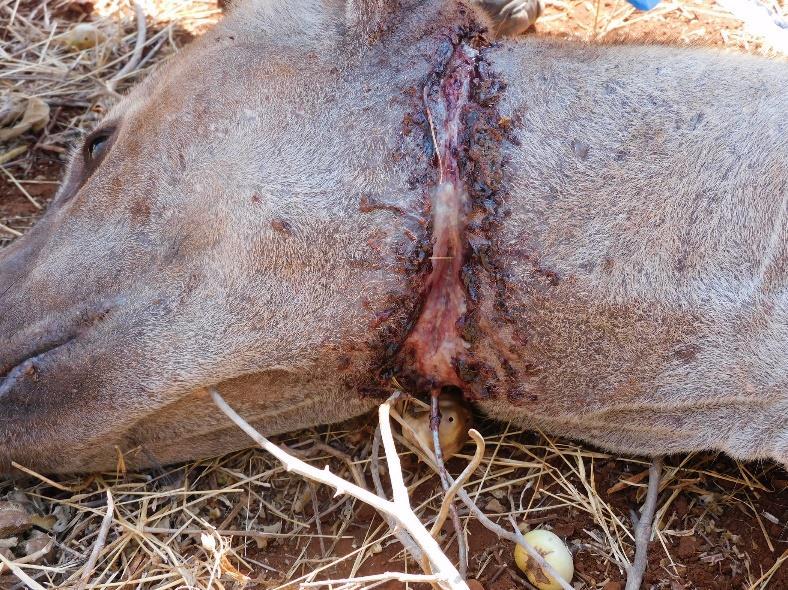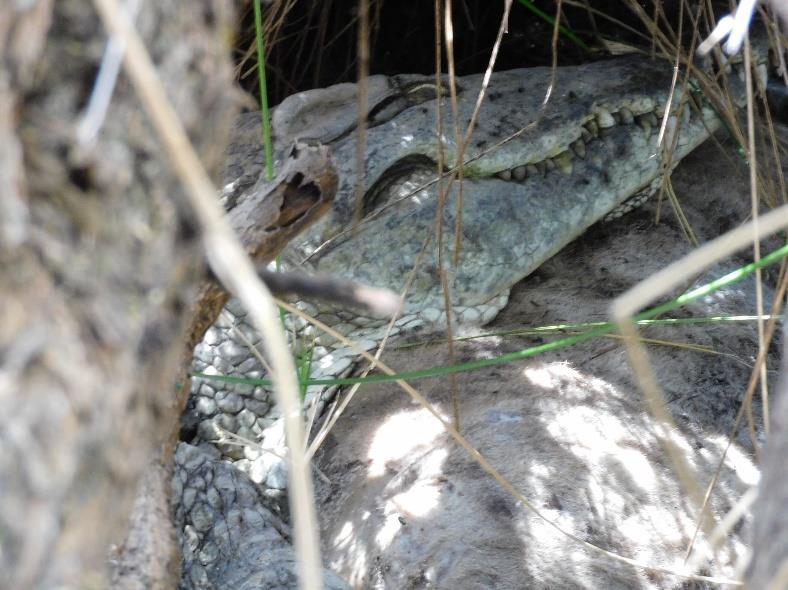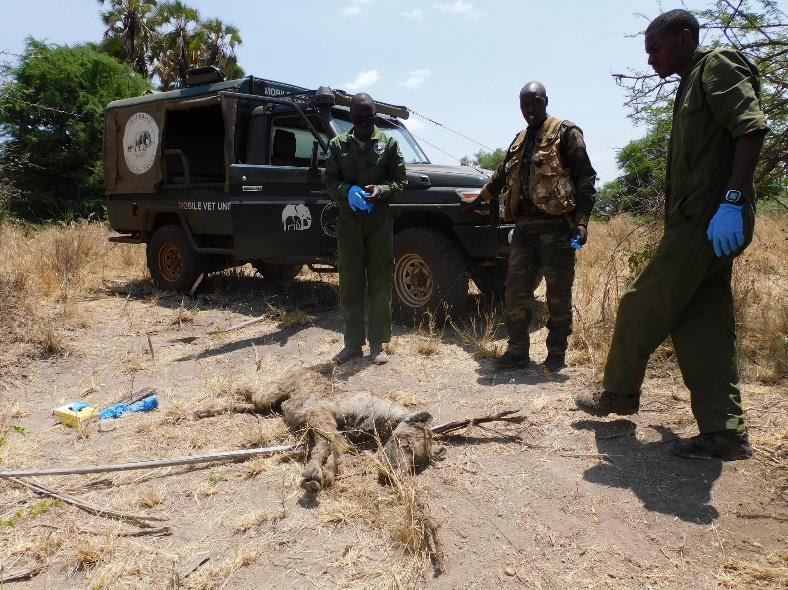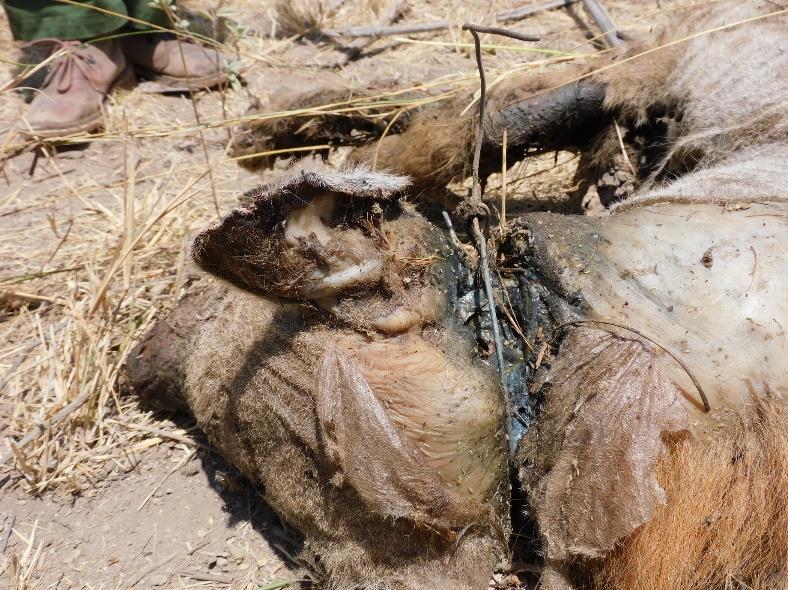
SEPTEMBER 2024




3 Cases in September 2 Poaching Cases
September Report by Dr. Aminga Duncan
1 Rhino Case
The month of September was characterized by extreme temperature fluctuations during the day and at night accompanied by clear skies. Wild animals have dispersed in search of forage and water due to widespread depletion of grass cover, and the drying up of most seasonal rivers and waterholes. Consequently, incidents of human-wildlife conflict have increased, as animals move beyond protected areas into human settlements in search of sustenance.
Over the reporting period, the SWT/KWS Meru Mobile Veterinary Unit responded to 3 wildlife cases, all within Meru National Park. The team treated a male white rhinoceros suffering from a filarial wound and injuries sustained in a territorial fight with a good prognosis for recovery. Additionally, they attended to a male spotted hyena with a wire snare tightly constricting its neck that was successfully treated with a good prognosis for recovery. Unfortunately, in another case, a necropsy conducted on a female spotted hyena revealed she had succumbed to injuries caused by a wire snare that had fatally constricted her neck.
Acknowledgement
We are deeply grateful to Sylvie Chantecaille for the ongoing generous financial support given to the Meru Mobile Veterinary Unit through the Sheldrick Wildlife Trust. This support ensures that wildlife species within and beyond the Eastern Conservation Area receive prompt veterinarian treatment. We also thank Kenya Wildlife Service for providing oversight and logistical support under the leadership of the Senior Assistant Director-Eastern Conservation Area and the Head of KWS-Veterinary Services Department. Furthermore, we appreciate tour guides at Elsa's Kopje for reporting wildlife emergencies, and all the individuals who provided steadfast support during veterinary interventions.
Case Details
September 2024


Rhino Natural Causes
Meru National Park
This injured male white rhino was suspected to have sustained injuries during a territorial fight.
Immobilisation, examination and treatment
The rhino was found in a densely vegetated area, it was herded to a more open and vehicle-accessible location with assistance from a KWS helicopter. The animal was darted on the left rump with 4 mgs Etorphine and 50 mgs Azaperone. Within 5 minutes, the rhinoceros was in sternal recumbency. He was promptly secured, blindfolded, and the darting site infused with an antibiotic ointment and covered with antibiotic spray. 50 mgs Butorphanol tartrate was administered intravenously to counter the adverse effects of Etorphine. Intranasal oxygen insufflation was also initiated to support cardiorespiratory function. Additionally, the animal’s body was doused with water to facilitate thermoregulation. The rhino was in fair body condition (score of 3/5). A filarial wound, measuring approximately 10 inches in width and 14 inches in length was observed on the left rump
The wound had been exacerbated by a recent territorial fight. Additionally, the rhino had abrasion wounds on the flanks, legs, rump, and ventral neck regions. The abrasion wounds were cleaned with water, irrigated with Iodine, and covered with an antibiotic aerosol. The major wound was irrigated with water, debrided with Hydrogen peroxide, and necrotic tissues excised. The wound was then flushed with Iodine, packed with green clay, and covered with an antibiotic spray to deter flies and promote healing. Blood samples, tick samples, and tissue samples were collected for laboratory analysis. 30,000 mgs Amoxicillin, 2,000 mgs Flunixin meglumine, and 4,000 mgs Cyanocobalamin were administered intramuscularly. Additionally, 15 mgs Ivermectin was administered subcutaneously before anaesthesia was reversed with 100 mgs Naltrexone administered intravenously; an equivalent dose was given intramuscularly to prevent re-narcotization. The animal regained consciousness after 3 minutes and slowly walked back into the dense thickets.
Prognosis
The rhino has a good prognosis for recovery.










